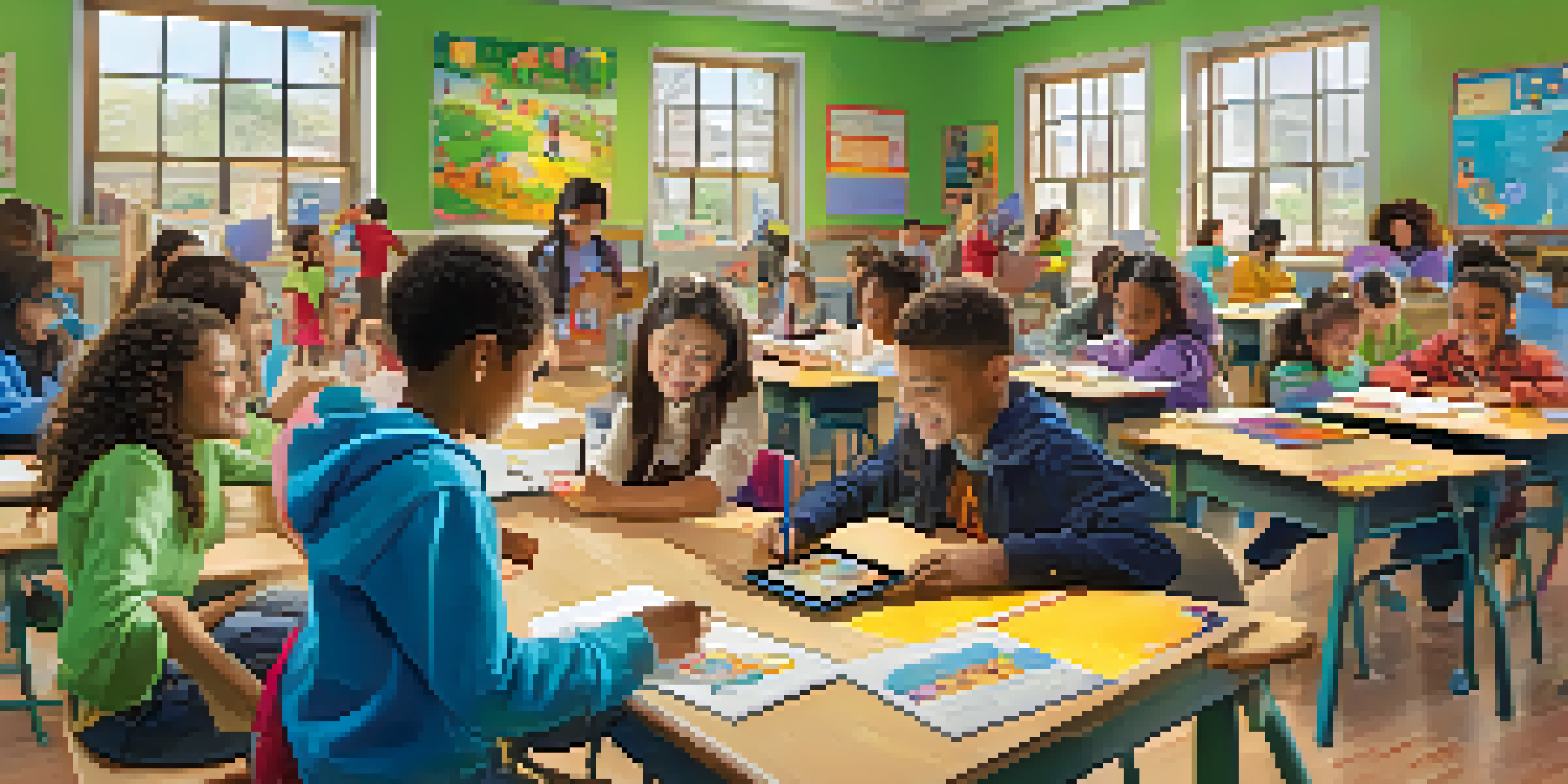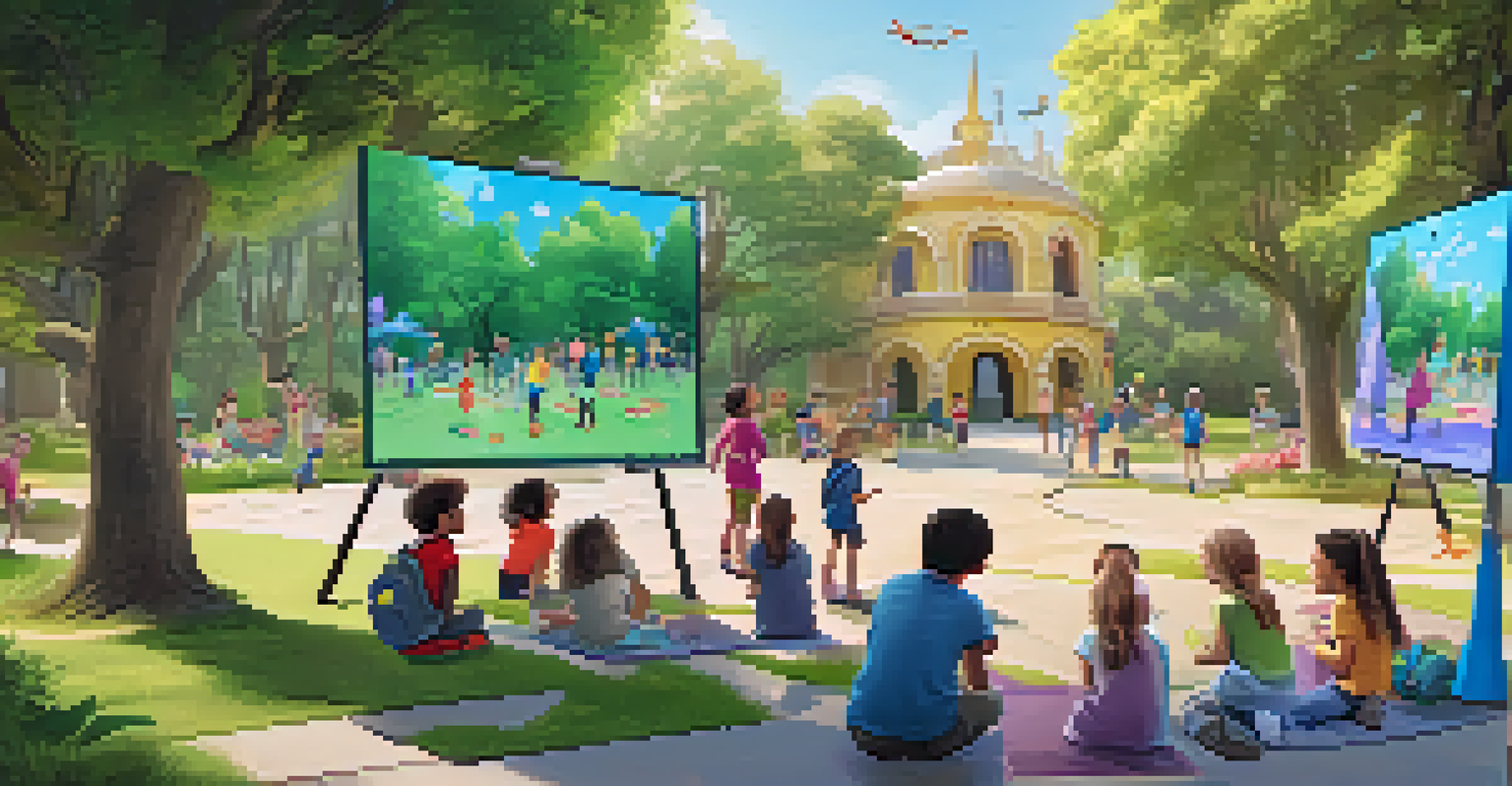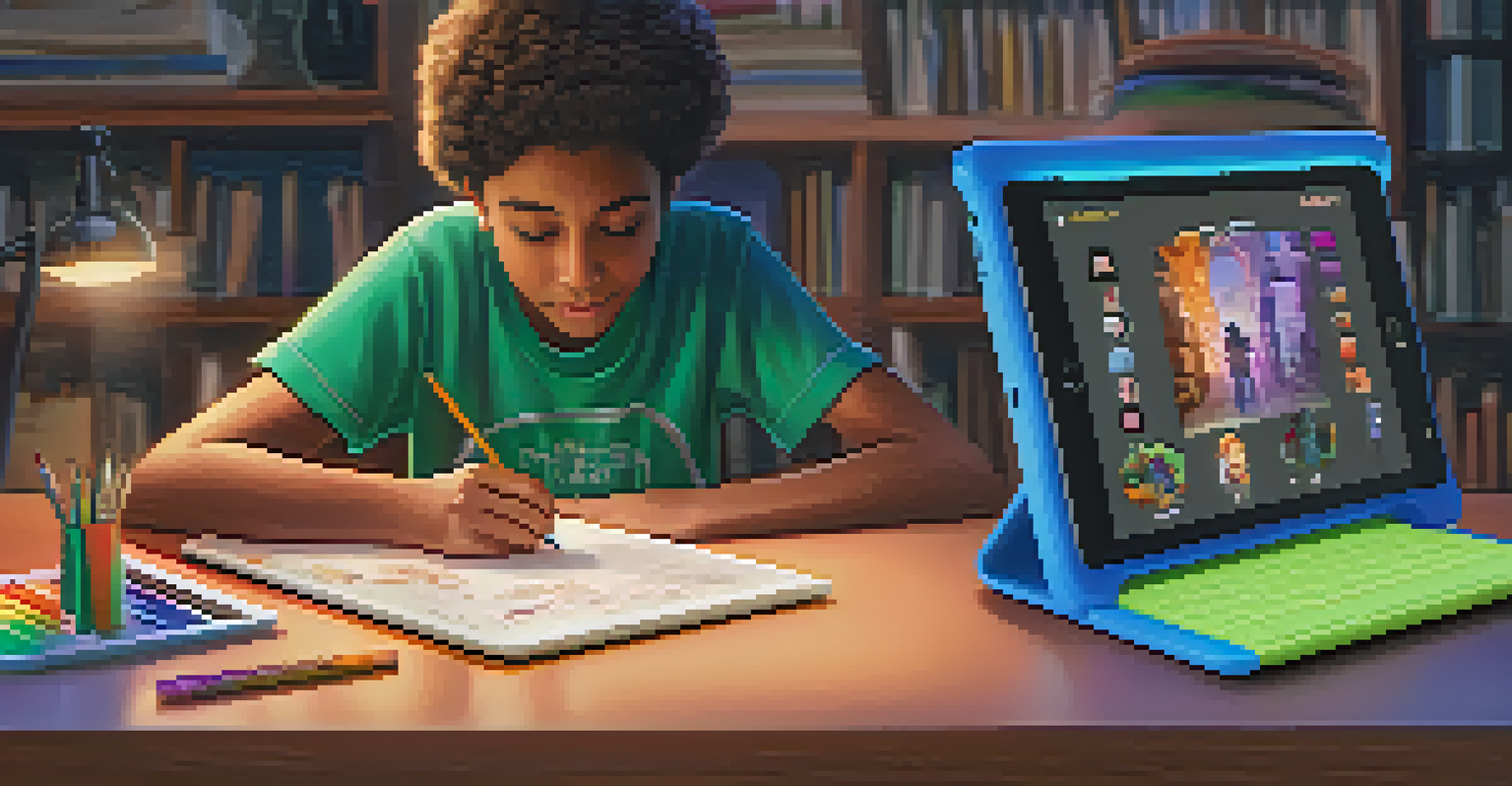AR-Enhanced Storytelling: Fostering Creativity in Students

Understanding AR and Its Role in Storytelling
Augmented Reality (AR) blends digital content with the real world, creating an interactive experience. Imagine reading a story and seeing characters come to life right before your eyes! This technology not only enhances engagement but also offers a new dimension to storytelling that traditional methods simply can't match.
Technology is best when it brings people together.
In an educational context, AR can transform mundane lessons into vibrant narratives. For example, a history lesson could feature AR-enhanced timelines where students can visually explore events as they unfold. This immersive approach fosters a deeper understanding and retention of information.
By integrating AR into storytelling, educators can spark creativity and imagination in students. Allowing them to visualize and interact with stories encourages them to think critically and develop their own narratives. It’s all about making learning fun and engaging!
The Benefits of AR-Enhanced Storytelling in Education
AR storytelling offers several benefits, primarily enhancing student engagement. When students can see and interact with story elements, they become active participants rather than passive listeners. This shift in dynamics can lead to increased interest in learning and improved academic performance.

Additionally, AR promotes collaborative learning. Students can work together to create their own AR stories, sharing ideas and building off one another’s creativity. This teamwork not only hones their storytelling skills but also fosters essential social skills like communication and cooperation.
AR Enhances Student Engagement
Augmented Reality transforms students from passive listeners to active participants, boosting their interest and academic performance.
Furthermore, AR tools often cater to various learning styles. Visual learners benefit from the graphics, while kinesthetic learners enjoy the hands-on interaction. This inclusivity ensures that all students have the opportunity to thrive in a creative environment.
Incorporating AR Into the Classroom: Practical Steps
To successfully incorporate AR into storytelling, educators can start by selecting the right AR tools. There are numerous apps and platforms available that are user-friendly for both teachers and students. Choosing one that aligns with learning objectives is crucial for a seamless integration.
The beautiful thing about learning is that no one can take it away from you.
Once the tools are in place, educators can introduce AR storytelling through guided projects. For instance, students might create an AR-enhanced retelling of a classic tale, allowing them to experiment with plot and character development. This hands-on approach makes learning more relatable and enjoyable.
Finally, it's essential to encourage feedback and reflection. After completing an AR project, discussions about what worked well and what could be improved help students internalize their learning experiences. This process also cultivates a growth mindset, essential for creative development.
Fostering Creativity: Examples of AR Storytelling Projects
One exciting project could involve students creating an AR scavenger hunt based on a story's themes. By designing clues that integrate AR, students engage in both storytelling and problem-solving. This project not only enhances creativity but also promotes critical thinking.
Another example is having students create AR character profiles. They could design interactive profiles that showcase their characters' backgrounds, motivations, and story arcs. This task encourages deep character exploration and enhances their understanding of narrative structures.
Collaborative Learning with AR
AR storytelling promotes teamwork as students collaborate to create interactive stories, enhancing their creativity and social skills.
These projects can be easily adapted for various age groups and subjects, proving that AR storytelling is versatile. Whether it's a science project showcasing ecosystems or a literature assignment analyzing character development, the possibilities are endless.
Challenges of Implementing AR in Education
While AR storytelling is promising, it does come with challenges. One major hurdle is access to technology. Not all schools have the resources needed to implement AR tools, which can create disparities in learning opportunities.
Additionally, teachers may require training to effectively use AR tools in their lessons. Without proper guidance, the technology can become overwhelming, leading to frustration instead of creativity. Ongoing professional development is essential in equipping educators with the skills they need.
Lastly, there’s the concern of screen time. Balancing AR activities with traditional learning methods is crucial to prevent excessive reliance on technology. Finding the right blend will ensure that students benefit from both digital and analog storytelling methods.
The Future of AR in Storytelling and Education
Looking ahead, the future of AR in education appears bright. As technology advances and becomes more accessible, we can expect AR storytelling to become a staple in classrooms. This evolution will further enhance how stories are told and experienced by students.
Moreover, with continuous innovation, AR tools are likely to become more intuitive, making them even easier for educators and students to use. Imagine a world where students can create and share their AR narratives globally, fostering a collaborative storytelling community.
Future of AR in Education
As AR technology evolves, it is set to become an integral part of education, fostering creativity and preparing students for a tech-driven world.
Ultimately, the integration of AR in education not only enhances creativity but also prepares students for a technology-driven future. By embracing this change, we can cultivate a generation of imaginative, innovative thinkers ready to tackle the challenges of tomorrow.
Conclusion: Embracing AR for Creative Learning
In conclusion, AR-enhanced storytelling presents an exciting opportunity to foster creativity in students. By utilizing this technology, educators can create engaging and interactive experiences that inspire a love for learning. The blend of storytelling and AR not only captivates students' imaginations but also equips them with important skills.
As we continue to explore the potential of AR in education, it's vital to remain adaptable and open to new ideas. Embracing this innovative approach will not only enhance storytelling but also enrich the overall educational experience.

So, let’s encourage our students to dive into the world of AR storytelling, where their creativity can flourish and their imaginations can soar. The future of learning is bright, and it’s time to make the most of it!